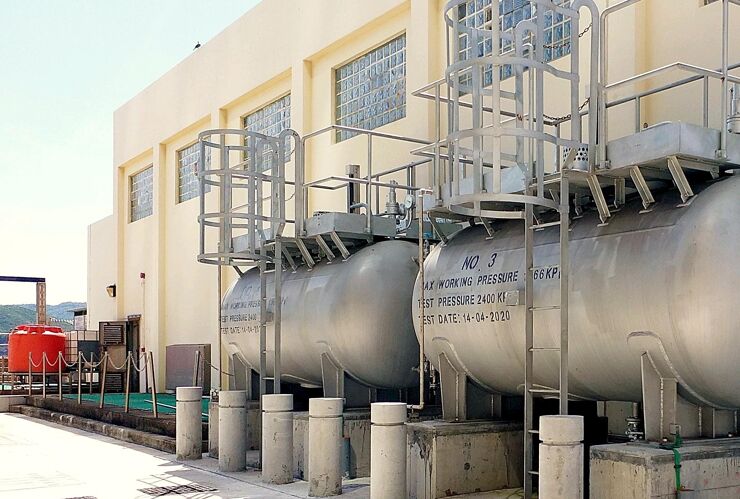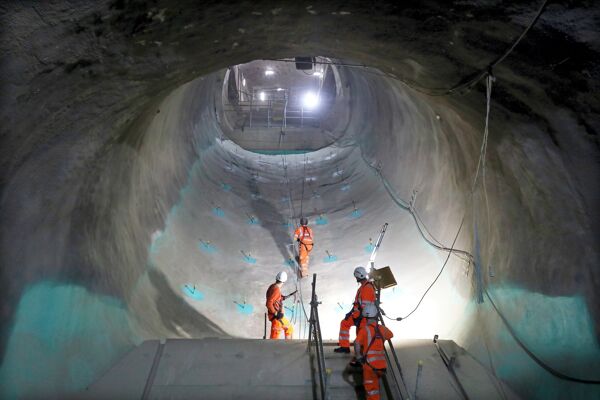
By Simon Fullalove
The Water Supplies Department (WSD) of The Government of the Hong Kong Special Administrative Region has used NEC to upgrade a saltwater pumping station and associated supply mains at the eastern end of Hong Kong Island. The increased capacity is to meet the increasing demand for salt water for toilet flushing from planned and potential developments in the Chai Wan and Siu Sai Wan areas.
WSD let the civil engineering works to CW-CMGC Joint Venture, consisting of Chun Wo Construction and Engineering Company Limited and China Metallurgical Group Corporation, in April 2017 under an NEC3 Engineering and Construction contract (ECC) Option B (priced contract with bill of quantities). It was one of WSD’s first NEC projects to use in-house design and construction supervision rather than external consultants.
The HK$223 million (£21 million) contract involved uprating the capacity of the existing Siu Sai Wan saltwater pumping station in Chai Wan from 30 000 m3/day to 41 700 m3/day, plus laying 3.8 km of 150−600 mm diameter saltwater mains. Various trenchless methods were used for the main-laying works to minimise physical disturbance to traffic, pedestrians and local businesses.
The civil engineering works started on site in April 2017 and were completed on time and within budget in May 2021. Under a separate mechanical and electrical contract, the pumping station was equipped with variable-speed pumping to balance flows in the lower part of the supply zone, avoiding the need to enlarge the existing Chai Wan saltwater service reservoir as well as reducing operational energy costs.
Collaborative approach
WSD engineer Chung Shing Hing says that although WSD’s design team had consulted and obtained consent from relevant stakeholders during design of the water mains, there were some last-minute local objections to some sections of the proposed water mains alignments and working hours. ‘Following the NEC requirement to act in a “spirit of mutual trust and co-operation”, the parties collaborated to work out, consult and gain consent for revised alignments and construction methods, such as changing to trenchless construction. This ensured that all objections and potential delays were successfully mitigated.’
He says the mechanical and electrical contract was originally planned to follow completion of the civil engineering contract. ‘However, following collaborative discussions, the contractor rescheduled the pumping station element and completed it 6 months earlier. This enabled the mechanical and electrical works to finish at the same time as civils contract.’
Chung says one of the key advantages of NEC was the timeframe and mechanism for handling and assessing compensation events. ‘This ensured the project manager and contractor could work in more a collaborative manner to agree all compensation events promptly as the works proceeded, enabling the final account to be agreed within 4 months of contract completion.’
Close communications
To help meet NEC communications requirements, he says the project team shared a joint site office. ‘We also wore site uniforms with the same project logo and arranged regular NEC risk reduction meetings. In addition, we held annual partnering workshops to encourage openness and mutual trust. With the mutual objectives set at the initial stage of the contract and interim milestones established, the project team strived for the same goals of early completion and hence cost saving throughout the course of the contract.’
Chung says early identification of problems and prompt decision making were essential for resolving site problems. ‘Following the NEC early warning process, the project manager and contractor notified each other of issues that were critical to time, cost, safety or quality of the works. Instead of focusing on respective contractual responsibilities, each party was motivated to give early warnings immediately on becoming aware of a potential risk to the contract so as to maximise the time available for problem solving.’
He says the project team issued a total of 138 early warnings during the course of the contract, all of which were resolved satisfactorily. ‘For example, the contractor issued an early warning on noticing a potential risk of delay to the pumping station caused by interfacing mechanical and electrical works. The project manager collaborated with both contractors to identify the extent of the conflict and to agree revised works schedules by streamlining material procurement and on-site preparation. This successfully avoided disruption to both contractors and expedited overall progress.’
Digital modelling
Chung says building information modelling (BIM) was adopted throughout the project development, from design through to construction and operation.
‘Inspired by NEC’s “win-win” collaborative approach and building on the strong team spirit developed, the project manager worked with the contractor and its BIM subcontractor to gain maximum benefit from BIM.
The model for the upgraded pumping station was established at the design stage and was continuously updated throughout the construction phase. The as-built BIM model was then delivered to the operation team to facilitate future operation and maintenance in an effective and efficient way.’
Benefits of Using NEC
- NEC requirement to act in a ‘spirit of mutual trust and co-operation’ ensured the parties collaborated to resolve last-minute local objections to some sections of the proposed water mains alignment and construction methods, thereby avoiding delay.
- NEC-inspired collaboration minimised potential conflict with a related mechanical and electrical contract. It also led to part of the civil engineering works being completed 6 months early to allow both contracts to finish at the same time.
- NEC early warning process motivated parties to quickly notify any potential risks to the contract so as to maximise the time available for problem solving. All 138 early warnings were resolved satisfactorily.
- NEC timeframe and mechanism for handling and assessing compensation events ensured the project manager and contractor worked collaboratively to agree all compensation events promptly as the work proceeded, such that final account could be agreed within 4 months of contract completion.



